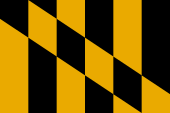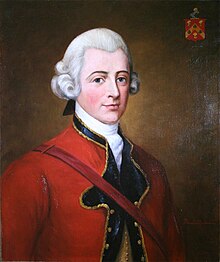(No 13.)
ASSOCIATION of the FREEMEN of MARYLAND
July 26, 1775. [1]
The long premeditated, and now avowed design of the British Government, to raise a revenue from the property of the colonists without their consent, on the gift, grant and disposition of the Commons of Great Britain; the arbitrary and vindictive statutes passed under color of punishing a riot, to subdue by Military force, and by famine, the Massachusetts Bay; the unlimited power assumed by parliament to alter the charter of that province, and the constitution of all the colonies, thereby destroying the essential securities of the lives, liberties and properties of the colonists; the commencement of hostilities by the ministerial forces, and the cruel prosecution of the War against the people of the Massachusetts Bay, followed by General Gage's proclamation, declaring almost the whole of the Inhabitants of the united colonies, by name or description, rebels and traitors are sufficient causes to arm a free people in defence of their liberty, and to justify resistance, no longer dictated by prudence merely, but by necessity, and leave no alternative but base submission or manly opposition to uncontrollable tyranny. The Congress chose the latter, and for the express purpose of securing and defending the united colonies, and preserving them in safety, against all attempts to carry the above-mentioned acts into execution by force of arms.
Resolved, that the said colonies be immediately put into a state of defence, and now supports, at the joint expense, an army to restrain the further violence, and repel the future attacks of a disappointed and exasperated enemy.
We therefore inhabitants of the Province of Maryland, firmly persuaded that it is necessary and justifiable to repel force by force, do approve of the opposition by Arms to the British troops, employed to enforce obedience to the late acts and statutes of the British parliament, for raising a revenue in America, and altering and changing the charter and constitution of the Massachusetts Bay, and for destroying the essential securities for the lives, liberties and properties of the subjects in the united colonies. And we do unite and associate, as one band, and firmly and solemnly engage and pledge ourselves to each other, and to America, that we will to the utmost of our power, promote and support the present opposition, carrying on, as well by Arms, as by the continental association, restraining our commerce.
And as in these times of public danger, and until a reconciliation with Great Britain, on constitutional principles is effected (an event we most ardently wish may soon take place) the energy of government may be greatly impaired, so that even zeal unrestrained, may be productive of anarchy and confusion; We do in like manner unite, associate, and solemnly engage in maintenance of good order, and the public peace, to support the civil power in the due execution of the laws, so far as may be consistent with the present plan of opposition; and to defend with our utmost power all persons from every species of outrage to themselves or their property, and to prevent any punishment, from being inflicted on any offenders, other than such, as shall be adjudged by the civil magistrate, continental congress, our convention, council of safety, or committees of observation.
Note by Maryland Historical Society
The original engagement of the Associators, preserved under glass at Annapolis, consists of two pieces, apparently torn apart, and pasted down on card-board. On our p. 67 the order of names and arrangement of columns have been preserved, though not the spacing; and the division of the pieces falls just below the names of Joseph Sim, Thomas Dorsey, and Charles Ridgely.
On comparing these signatures with the Journal, 29 names will be found to be missing, viz: Philip Richard Fendall I (1734–1805) of Charles Co.; Alexander Somerville of Calvert; George Lee and Dr Richard Brooke of Prince George's; Thomas Tillard and John Dorsey of Anne Arundel; Walter Tolly, James Gittings, and Charles Ridgely of John, of Baltimore; Charles Beatty, Baker Johnson, Jacob Funk, Samuel Beall, and Wm. Deakins Jr., of Frederick; Samuel Durham, Saml. Ashmead, John Beall Howard, Francis Holland, Benjamin Rumsey, and James McComas, of Harford; Joseph Gilpin and William Rumsey, of Cecil; Richard Lloyd of Kent; John Wallace and John Brown, of Queen Anne's; Robert Harrison of Dorchester; Benson Stainton of Caroline; Josiah Polk of Somerset; Peter Chaille of Worcester.
Now when we note that amongst these 29 were some of the most active and assiduous members of the Convention, and that 21 of them had, as the Journal shows, no leave of absence, it is impossible to resist the conclusion that a portion of the document has been lost. It will be observed that the arrangement is generally by counties, and the break in the paper comes between Prince George's and Queen Anne's, between Ann Arundel and Dorchester, and between Baltimore and Worcester; a fact which confirms the editor's belief that a piece has fallen out between the upper and lower portions as now joined. [3]

